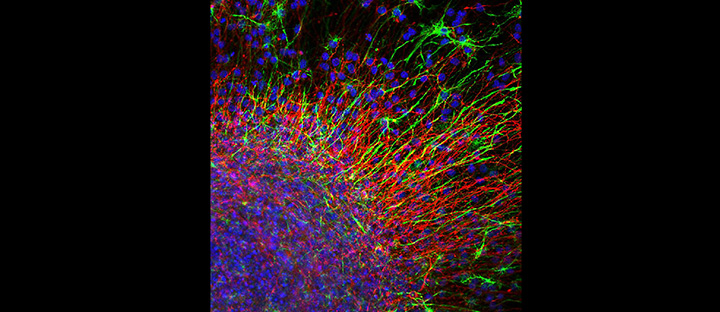In This Section
- Home
- Staff Profiles & Phone Book
- About the Department
- A History of the Department LANDING PAGE
- A history of the Department; The early years to the 1980s
- A history of the Department; The move from the Windle Building to BSI and WGB
- UCC Professors of Anatomy and Heads of Department
- The development of the UCC HUB
- Current students, recent research graduates and awards
- Useful Links
- Welcome from Head of Department of Anatomy and Neuroscience
- Study Anatomy
- Study Neuroscience
- Research
- UCC Anatomical Donations
- Biosciences Imaging Centre
- BSc Medical and Health Sciences
- News & Events
- News Archive 2024
- News Archive 2023
- News Archive 2022
- News Archive 2021
- News Archive 2020
- News Archive 2019
- News Archive 2018
- Recent Publications
- News archive 2017
- News Archive 2016
- News Archive2015
- News Archive 2014
- News Archive 2013
- News Archive 2012
- News Archive 2011
- BRAIN AWARENESS WEEK 2023
- Department Events and Conferences
- Seminar series 2019_2020
- photo galleries
- Narrowing the void Conference 2023
- Photos of BSc Medical and Health Sciences Mentoring launch 2022
- International Women's Day 2023
- 2023 BRIGHT FUTURES - Celebrating our researchers
- 2023 UCC Futures - Future Ageing & Brain Sciences
- Recent Graduations July 2023
- Anatomy and Neuroscience Top 100 Anatomy Physiology 2023
- BRAIN AWARENESS WEEK 2023 FUN AND GAMES EVENT
- Medical and Health Sciences First year class 2023
- 2023 Brain Awareness week Scientific discussion photo gallery
- World Anatomy Day 2023
- BSc MHS MENTORING PROGRAMME 2023
- BSc Medical and Health Sciences Graduation 2023
- BSc Neuroscience Graduation Photo Gallery 2023
- Dr Kathy Quane Nov 2023
- THANKSGIVING PHOTOS 2012
- Photo Gallery: Society of Translational Medicine Careers Fair 2023
- Photo Gallery:2023 TRAIN AWARDS
- Photo Gallery:2024 Creative Week St Joseph's NS
- Photo Gallery: Department of Anatomy and Neuroscience Thanksgiving Service 2024
- Photo Gallery: Professor Aideen Sullivan farewell party
- Photo Gallery: Irish Pain Society Annual Scientific Meeting Cork 2023
- Photo Gallery: 2024 Medical and Health Sciences Graduation
- Photo Gallery: Medical and Health Sciences Meet and Greet 2024
- Photo Gallery: 2024 BSC NEUROSCIENCE Graduation
- Photo Gallery: 2025 INTERNATIONAL WOMEN'S DAY
- Photo Gallery: 2025 BSc Neuroscience class and staff
- Photo Gallery: 2025 BRAIN CONNECTIONS
- BSc Neuroscience Graduation Photo Gallery 2025
- World Anatomy Day 2025
- UCC Learning and Teaching Showcase 2025
- Narrowing the Void Conference 2023
- Department of Anatomy and Neuroscience Contact Us
Microscopy image chosen for CELL PICTURE SHOW

The image by Yvonne Nolan, Louise Collins, Suzanne Crotty, Department of Anatomy and Neuroscience, UCC can be viewed at
When cultured with growth factors in vitro, neural stem cells can generate neurons (red), as well as the cells that support them— astrocytes (green) and oligodendrocytes. In culture, neural stem cells group together in ball-like clusters, called neurospheres (bottom left). Neurospheres are of great therapeutic interest because they have the potential to regenerate and replace neurons lost in traumatic brain injury and neurodegenerative diseases, such as Parkinson's disease, Alzheimer's disease, and multiple sclerosis.
Image: This neurosphere (bottom left) was prepared from neural stem cells extracted from an embryonic rat midbrain. After allowing the cells to proliferate and expand for 7 days, they were imaged with confocal microscopy. Cells differentiated to neurons are labeled red with an antibody to βIII-tubulin, whereas astrocytes are labeled green with an antibody to glial fibrillary acidic protein (GFAP), an intermediate filament specific to astrocytes. All nuclei are stained blue with bisbenzamide.
Department of Anatomy and Neuroscience
Anatamaíocht agus Néareolaíocht
Contact us
Room 2.33, 2nd Floor, Western Gateway Building, University College, Cork, Ireland
